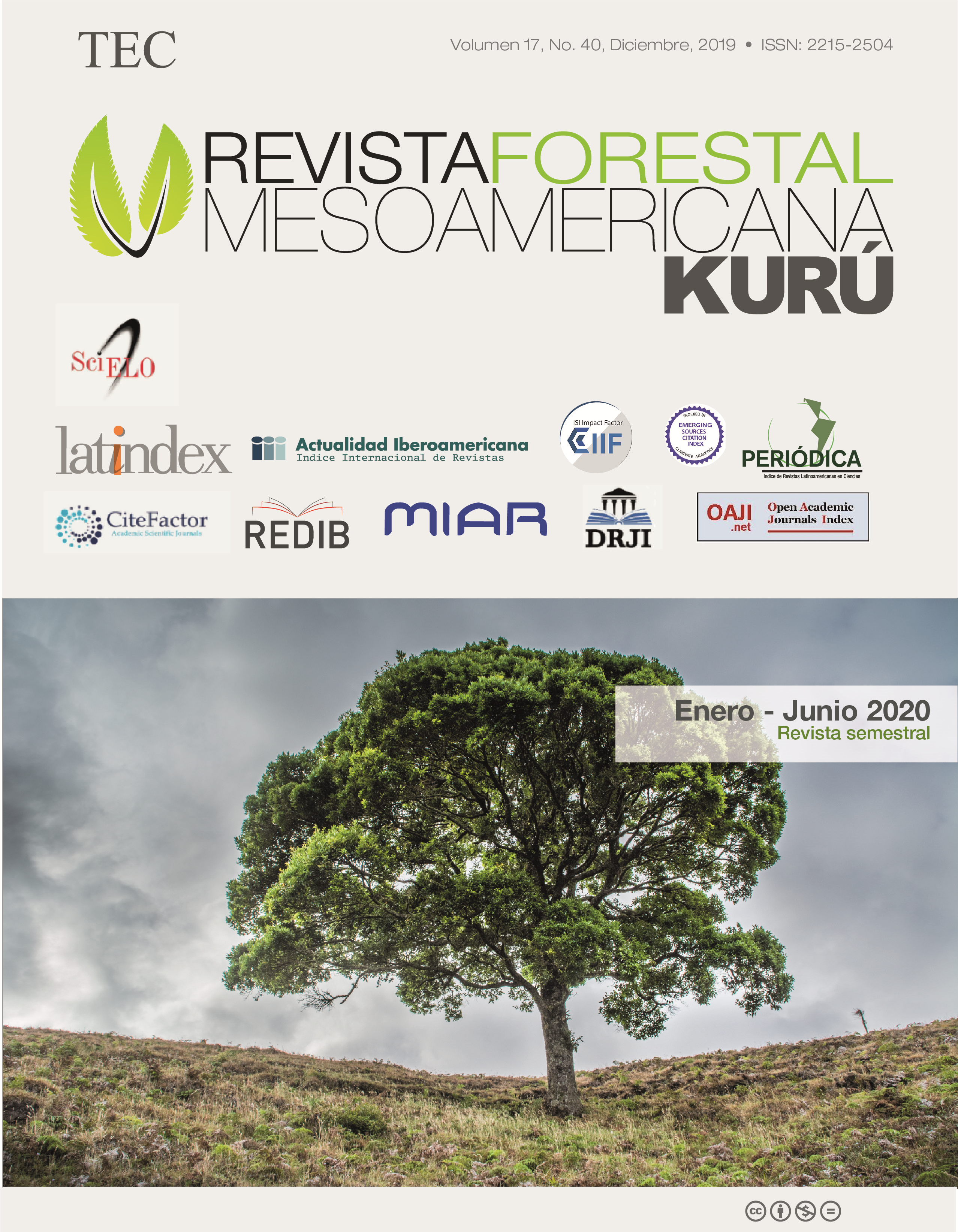Use of artificial neural networks and regression models to estimate native species volume in Portel, Pará – Brazil
Main Article Content
Abstract
The objective of the present study was to compare the volume estimates obtained by regression equations with artificial neural networks (RNA) for native areas under management plan in the Portel region, state of Pará, from the rigorous cubing data of 864 trees with DBH ≥ 45 cm from Annual Production Units (UPA) managed in 2015 in an area of dense ombrophilous terra firme forest. The data processing aimed to select the best regression model considering the UPA 1. The best performing equation was chosen according to the root mean square error in percent (RQME%), Pearson correlation and percentage residual graph. For the selection of the best network and its comparison with the best adjusted regression equation, the statistics used were: RQME%, Pearson correlation between observed and estimated volume and bias. The best performing model was the Spurr (), which was later compared with the best RNA obtained from data training. Both methods showed acceptable fit and precision statistics, with potential use to estimate the volume of the species. However, the RNA was higher showing higher precision in relation to the regression in volume estimation.
Keywords: Artificial intelligence, rigorous cubing, individual trees, forest management.
Article Details
Revista Forestal Mesoamericana Kurú is licensed under CC BY-NC-ND 4.0
Al enviar un artículo a la Revista Forestal Mesoamericana kurú (RFMK), los autores ceden los derechos patrimoniales a la editorial de la RFMK una vez su manuscrito haya sido aprobado para publicación, autorizando a la RFMK a editarlo, reproducirlo, distribuirlo, y publicarlo en formato físico y/o electrónico. La titularidad de los derechos morales sobre los trabajos objeto de esta cesión seguirá perteneciendo a los autores.

